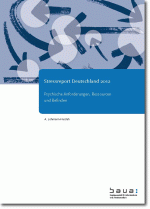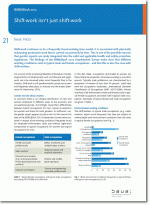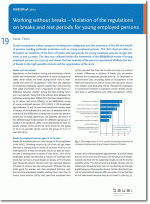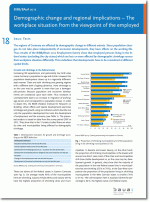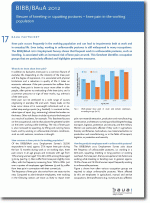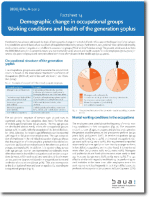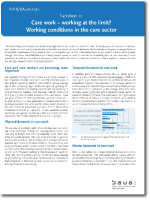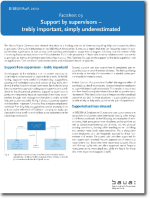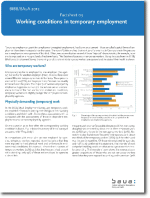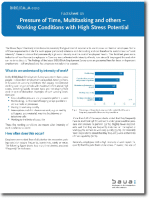Working conditions and health from the employees' perspective
The survey focuses on questions related to the workplace (areas of activity, work requirements, workloads, etc.) and to stress and health impairments.
Compared to other studies, the employment survey stands out thanks to the fact that it presents a representative sample of the working population. In addition, it can, by taking advantage of the simultaneous elicitation of data regarding stains and health problems, reveal relationships between stress and health problems in one survey.
Who was interviewed and how?
A total of 20,036 employed persons aged 15 and over with a working time of at least ten hours per week were interviewed in Germany. In this case volunteers were excluded as well as persons in an employment relationship within the framework of their first vocational training. Foreigners were only included in the survey if they had sufficient knowledge of German. Although employed without fixed remuneration, unpaid family workers and persons with a maximum of three months' interruption from work were interviewed.
The 2012 employment survey is already the sixth of its kind, carried out by computer-assisted telephone interviews, as was the predecessor survey carried out in 2006 (previously: BIBB/IAB survey).
What information is included?
The questionnaire from the 2012 BIBB/BAuA Employment Survey can be downloaded from the BIBB Research Data Centre website (see below).
In addition to the questionnaire and a more detailed description of the survey, three different basic analyses are available:
- All interviewees
- Men and women in full-time employment
- Comparison of the survey waves in 2012 and 2006
The basic analyses (in German) can be found on our German Website.
The data form the basis of the evaluations for the "Stressreport Deutschland 2012" (Stress Report Germany 2012).
In addition, different factsheets were published based on the 2012 survey (available in English).
In addition, 4,000 employees were interviewed personally (2,000) or online (2,000) as part of a methodological experiment. The results of this experiment are presented in a separate report.
